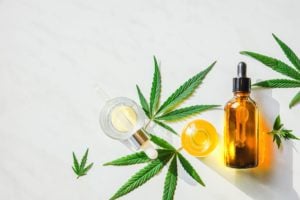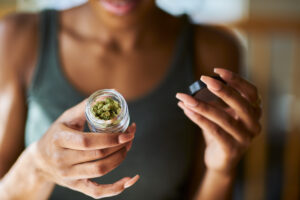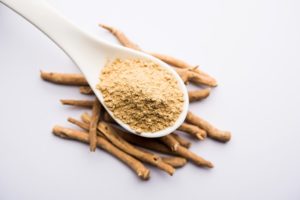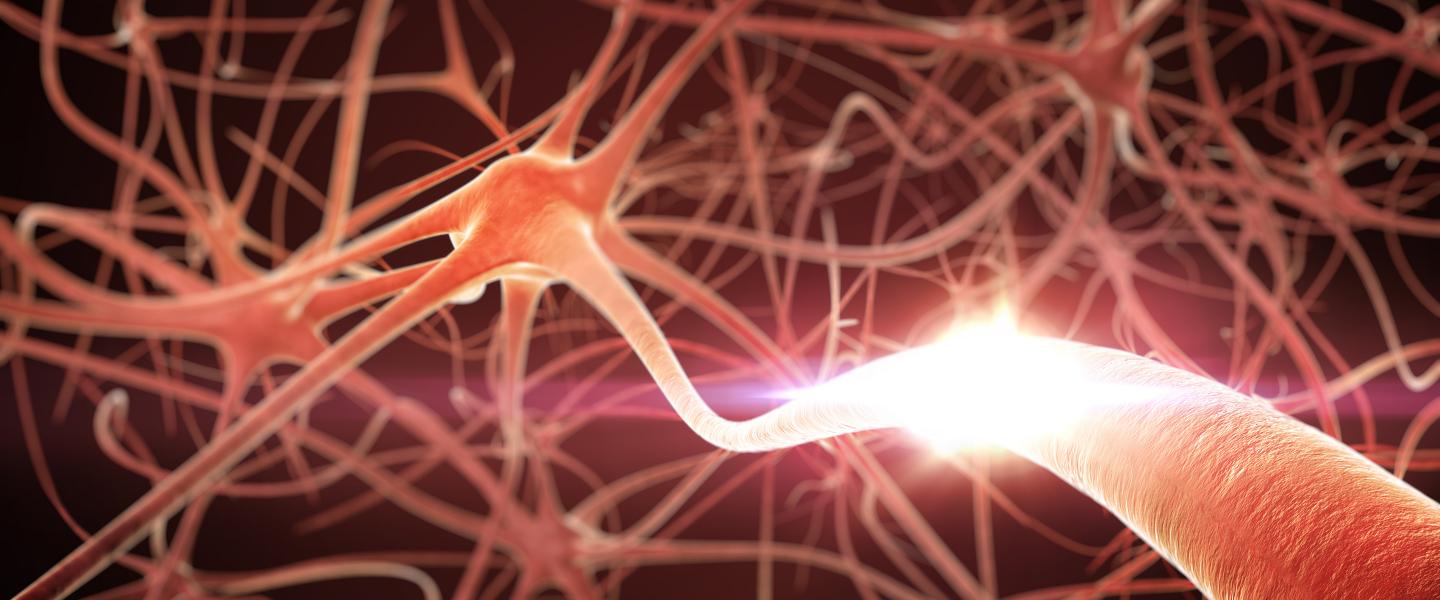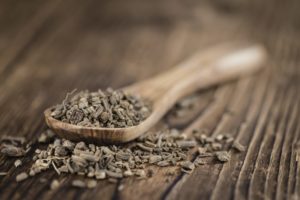CBN for Sleep
With up to two-thirds of adults in the U.S. experiencing occasional trouble sleeping, it is hardly surprising that the market for sleep aids continues to grow. People looking for new products might be wondering whether cannabinol, or CBN, can help them sleep.
Cannabinol (CBN) is one of many cannabinoids, which are a group of chemicals found in the Cannabis sativa plant . CBN is formed as the plant ages and another cannabinoid, called tetrahydrocannabinol (THC), begins to break down . Longer storage times, high temperatures, and exposure to oxygen can also encourage the formation of CBN.
While other cannabinoids like THC and cannabidiol (CBD) may be better known, companies are gradually introducing CBN as a potential sleep aid . CBN can come in forms like tinctures, capsules, or gummies, and it may also be combined with other sleep aids such as melatonin.
We examine the science behind CBN and how it compares to CBD. We also weigh the benefits and risks of CBN as a sleep aid and offer information for those interested in trying CBN for sleep.
Are You Getting Enough Deep Sleep?
A variety of issues can cause degrade your sleep quality. Answer three questions to understand if it’s a concern you should worry about.
What Does CBN Do for Sleep?
Manufacturers of sleep aids that contain CBN claim cannabinol can bring on drowsiness. Anecdotally, people claim that aged cannabis products have more CBN and therefore tend to make a person feel sleepy. However, there are few high-quality studies that specifically examine the effects of CBN for sleep.
The limited scientific evidence in favor of using cannabinol for sleep comes mostly from small studies conducted in the 1970s and 1980s. In one of these studies, CBN on its own had little to no effect on sleepiness , but participants did feel drowsier when they took CBN together with THC.
Although cannabis products like CBN show promise for helping people fall asleep quicker and stay asleep through the night, additional high-quality research is needed to understand the potential effects of cannabinoids on sleep.
CBN vs. CBD
Both cannabinol (CBN) and cannabidiol (CBD) are cannabinoids that can be isolated from the cannabis plant. CBN and CBD both act on receptors in the endocannabinoid system . The endocannabinoid system is involved in a variety of functions in the body including regulating appetite, pain, and immune system functioning.
Although CBN was the first cannabinoid isolated in research , CBD is a more common subject of research. CBD has been widely researched for its anti-inflammatory and anti-tumor properties, as well as its potential role in pain management and calming anxiety. Research suggests that CBD may also be beneficial for sleep . Whereas CBD is not psychoactive, CBN is considered minimally psychoactive.
The Food and Drug Administration (FDA) has approved forms of CBD and synthetic THC for use in treating seizures, nausea, vomiting, and loss of appetite in specific situations. So far, no products containing CBN have been approved for medical use by the FDA.
Effects of CBN
Although less researched than other cannabinoids, cannabinol has been studied for its potential therapeutic benefits. Although some of this research is promising, more studies are needed on the short- and long-term effects of CBN and other cannabinoids.
Benefits of CBN
Research into the benefits of cannabinol is in its early stages and there are no well-established uses of this cannabinoid. However, experts are hopeful that CBN may have the potential for:
- Inducing sleepiness
- Helping with pain management
- Boosting appetite
- Supporting the immune system
- Fighting inflammation
- Managing symptoms of attention-deficit/hyperactivity disorder (ADHD)
- Slowing tumor growth
- Treating glaucoma
Some research has investigated the potential benefits of combining CBN with other compounds in the cannabis plant . For example, ongoing studies are investigating whether cannabinoids in combination with terpenes might enhance the benefits of each substance. Terpenes are substances in the cannabis plant that affect its smell and taste.

Risks of CBN
There is little research on the risks of CBN in humans, so researchers are unsure of the side effects of CBN and potentially harmful interactions with other medications.
Though not specific to CBN, research has shown that using cannabis and cannabinoids might contribute to risks such as:
- Dizziness or head rush after standing up
- Dry mouth
- Paranoia or memory problems
- Unsafe driving
- Problems for a developing fetus
- Cannabis use disorder
- A higher risk of injury for older adults
- The development of severe mental illness for those already at risk
- Problematic interactions with other drugs
- Exacerbating pre-existing liver or kidney problems.
There is insufficient evidence to say whether some or all of the same side effects might occur when taking only CBN. Research has found that using cannabinoids together with other sleep-promoting substances such as L-tryptophan, valerian, melatonin, or alcohol may raise the risk of excessive sleepiness .
Cannabinoid products lack strict regulation. As a result, CBN products may contain impurities such as bacteria and heavy metals, small amounts of THC, or a different dosage from what is stated on the label. Additionally, since CBN is a byproduct of THC, there is a risk of a CBN product showing up on a drug test for THC .
Taking CBN as a Sleep Aid
Because there is limited research on the use of CBN, there are no research-based guidelines for using cannabinol as a sleep aid. This can make it difficult to determine proper dosing when using products such as CBN oil or CBN gummies for sleep.
If you are interested in using CBN or other cannabinoids to help you sleep, talk to your doctor first. Your doctor may be able to help you find a reputable product, set a safe dose, and determine whether CBN is appropriate based on your individual needs.
Sometimes, sleep problems arise due to a sleep disorder or another health condition. If you are having trouble sleeping, talk to your doctor. They can assess your symptoms, order any needed tests, and determine the appropriate treatment if needed.
Medical Disclaimer: The content on this page should not be taken as medical advice or used as a recommendation for any specific treatment or medication. Always consult your doctor before taking a new medication or changing your current treatment.
References
20 Sources
-
Bonnet, M. H. & Arand, D. L. (2022, April 15). Risk factors, comorbidities, and consequences of insomnia in adults. In R. Benca (Ed.). UpToDate., Retrieved October 7, 2022, from
https://www.uptodate.com/contents/risk-factors-comorbidities-and-consequences-of-insomnia-in-adults -
National Center for Complementary and Integrative Health. (2019, November). Cannabis (marijuana) and cannabinoids: What you need to know., Retrieved October 7, 2022, from
https://www.nccih.nih.gov/health/cannabis-marijuana-and-cannabinoids-what-you-need-to-know -
Nasrin, S., Watson, C., Perez-Paramo, Y. X., & Lazarus, P. (2021). Cannabinoid metabolites as inhibitors of major hepatic CYP450 enzymes, with implications for cannabis-drug interactions. Drug Metabolism and Disposition: The Biological Fate of Chemicals, 49(12), 1070–1080.
https://pubmed.ncbi.nlm.nih.gov/34493602/ -
Corroon J. (2021). Cannabinol and sleep: Separating fact from fiction. Cannabis and Cannabinoid Research, 6(5), 366–371.
https://pubmed.ncbi.nlm.nih.gov/34468204/ -
Morales, P., Hurst, D. P., & Reggio, P. H. (2017). Molecular targets of the phytocannabinoids: A complex picture. Progress in the Chemistry of Organic Natural Products, 103, 103–131.
https://pubmed.ncbi.nlm.nih.gov/28120232 -
Sheikh, N. K. & Dua, A. (2022, May 2). Cannabinoids. In StatPearls. StatPearls Publishing., Retrieved October 7, 2022, from
https://www.ncbi.nlm.nih.gov/books/NBK556062/ -
Almeida, C. F., Teixeira, N., Correia-da-Silva, G., & Amaral, C. (2021). Cannabinoids in breast cancer: Differential susceptibility according to subtype. Molecules, 27(1), 156.
https://pubmed.ncbi.nlm.nih.gov/35011388/ -
Schwab, R. J. (2022, May). Approach to the patient with a sleep or wakefulness disorder. Merck Manual Professional Version., Retrieved October 7, 2022, from
https://www.merckmanuals.com/professional/neurologic-disorders/sleep-and-wakefulness-disorders/approach-to-the-patient-with-a-sleep-or-wakefulness-disorder -
Kaul, M., Zee, P. C., & Sahni, A. S. (2021). Effects of cannabinoids on sleep and their therapeutic potential for sleep disorders. Neurotherapeutics, 18(1), 217–227.
https://pubmed.ncbi.nlm.nih.gov/33580483/ -
National Cancer Institute. (n.d.) Cannabinol., Retrieved October 7, 2022, from
https://www.cancer.gov/publications/dictionaries/cancer-drug/def/cannabinol -
Hergenrather, J. Y., Aviram, J., Vysotski, Y., Campisi-Pinto, S., Lewitus, G. M., & Meiri, D. (2020). Cannabinoid and terpenoid doses are associated with adult ADHD status of medical cannabis patients. Rambam Maimonides Medical Journal, 11(1), article e0001.
https://pubmed.ncbi.nlm.nih.gov/32017685/ -
Wang, B., Li, D., Cherkasova, V., Gerasymchuk, M., Narendran, A., Kovalchuk, I., & Kovalchuk, O. (2022). Cannabinol inhibits cellular proliferation, invasion, and angiogenesis of neuroblastoma via novel miR-34a/tRiMetF31/PFKFB3 axis. Cancers, 14(8), 1908.
https://pubmed.ncbi.nlm.nih.gov/35454815/ -
Somvanshi, R. K., Zou, S., Kadhim, S., Padania, S., Hsu, E., & Kumar, U. (2022). Cannabinol modulates neuroprotection and intraocular pressure: A potential multi-target therapeutic intervention for glaucoma. Biochimica et Biophysica Acta. Molecular Basis of Disease, 1868(3), 166325.
https://pubmed.ncbi.nlm.nih.gov/34921975/ -
Wong, H., & Cairns, B. E. (2019). Cannabidiol, cannabinol and their combinations act as peripheral analgesics in a rat model of myofascial pain. Archives of Oral Biology, 104, 33–39.
https://pubmed.ncbi.nlm.nih.gov/31158702/ -
Russo E. B. (2011). Taming THC: Potential cannabis synergy and phytocannabinoid-terpenoid entourage effects. British Journal of Pharmacology, 163(7), 1344–1364.
https://pubmed.ncbi.nlm.nih.gov/21749363/ -
Qian, Y., Gurley, B. J., & Markowitz, J. S. (2019). The potential for pharmacokinetic interactions between cannabis products and conventional medications. Journal of Clinical Psychopharmacology, 39(5), 462–471.
https://pubmed.ncbi.nlm.nih.gov/31433338/ -
Nasrin, S., Watson, C., Bardhi, K., Fort, G., Chen, G., & Lazarus, P. (2021). Inhibition of UDP-glucuronosyltransferase enzymes by major cannabinoids and their metabolites. Drug Metabolism and Disposition: The Biological Fate of Chemicals, 49(12), 1081–1089.
https://pubmed.ncbi.nlm.nih.gov/34493601/ -
Shane-McWhorter, L. (2022, January). Cannabidiol (CBD). Merck Manual Consumer Version., Retrieved October 7, 2022, from
https://www.merckmanuals.com/home/special-subjects/dietary-supplements-and-vitamins/cannabidiol-cbd -
National Library of Medicine. (2022, July 20). Cannabidiol (CBD)., Retrieved October 7, 2022, from
https://medlineplus.gov/druginfo/natural/1439.html -
Kroner, G. M., Johnson-Davis, K. L., Doyle, K., & McMillin, G. A. (2020). Cannabinol (CBN) cross-reacts with two urine immunoassays designed to detect tetrahydrocannabinol (THC) metabolite. The Journal of Applied Laboratory Medicine, 5(3), 569–574.
https://pubmed.ncbi.nlm.nih.gov/32445358/






